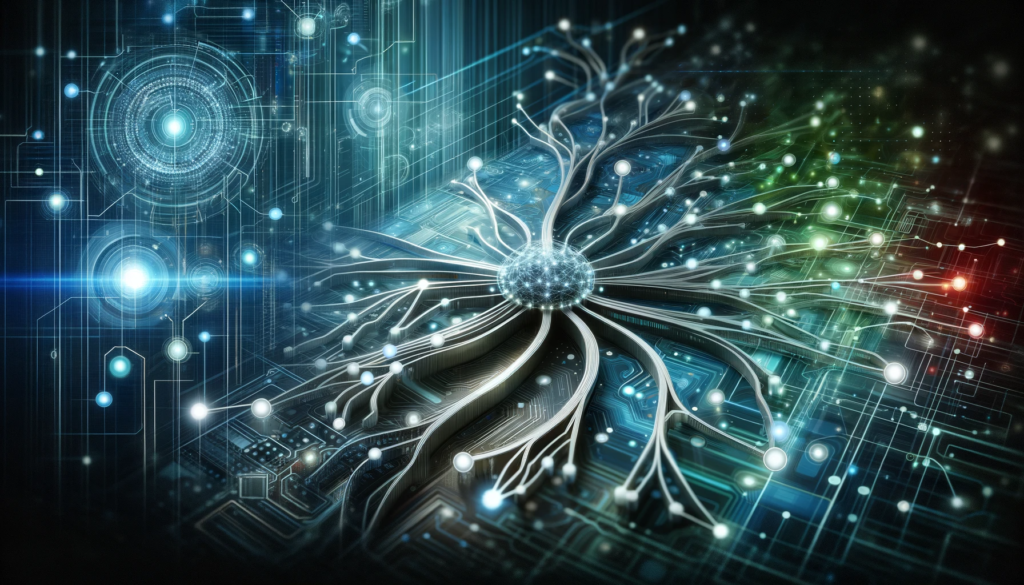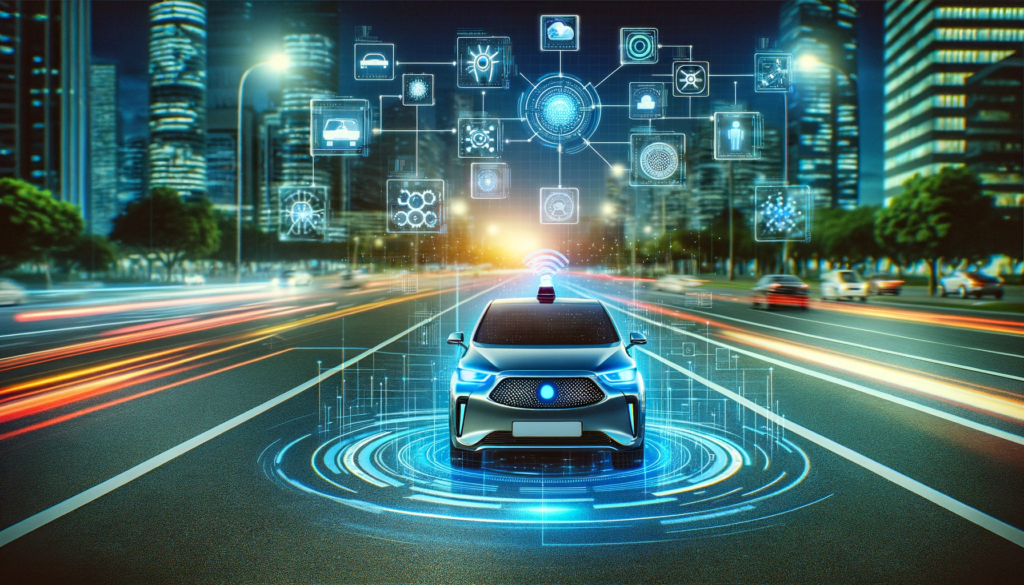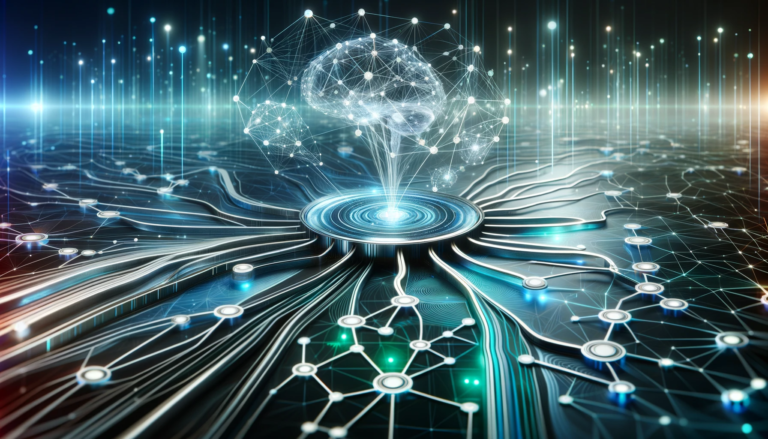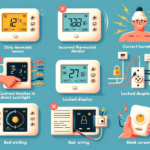Introduction: Neural Networks and Deep Learning
Neural Networks Vs Deep Learning Differences: To understand the world of artificial intelligence (AI), it's helpful to know about neural networks and deep learning. These are fancy terms, but they're actually based on how our brains work. Let's break them down in simple English.
Imagine your brain as a big network with lots of tiny parts called neurons. These neurons talk to each other and help you think, remember, and make decisions. A neural network in AI is like a mini-version of this. It's a bunch of digital 'neurons' connected together. When you give it information, like pictures or words, these neurons process it and try to make sense of it.
Now, think of neural networks like the first step in learning. They're pretty good but have their limits. They can learn simple stuff, like recognizing basic patterns or sorting things into categories. But when it comes to really complex tasks, like understanding a whole paragraph or recognizing faces in different lighting, they need more help.
That's where deep learning comes in. It's like a supercharged version of neural networks. Deep learning has not just one, but many layers of these neurons. Think of it like going deeper into learning – layer by layer, it gets better at handling complicated stuff.
These layers work together to figure out tricky problems. For example, in the first layer, the system might learn to recognize edges in a picture. In the next layer, it starts to understand shapes. By the time it gets to the deeper layers, it can recognize entire objects or even scenes.

Architectural Differences Between Neural Networks and Deep Learning
Let's talk about the differences in structure between neural networks and deep learning. To make it simple, think of these structures like buildings. A neural network is like a small house, while deep learning is like a huge skyscraper.
A basic neural network has something like a 'ground floor' and a 'top floor,' with just one 'hidden floor' in between. The ground floor is where it gets information, and the top floor is where it gives you the answer. The hidden floor in the middle is where all the thinking happens. Now, in this small house, each room (node) on a floor is connected to every room on the next floor. It's pretty straightforward – information goes in, travels through the hidden floor, and then the answer comes out.
Deep learning, on the other hand, is like a skyscraper with many hidden floors. Each floor has rooms (nodes), and each floor processes the information a bit more as it moves up. This design makes deep learning capable of understanding much more complex stuff than a simple neural network. It's because it has more space (layers) to break down the information and analyze it step by step.
In deep learning, there are different kinds of skyscrapers too! For instance, there's one type called a Convolutional Neural Network (CNN). Imagine this as a specialized skyscraper for handling images and videos. It has floors designed to pick out and focus on specific parts of an image, like edges or textures. This helps it recognize objects and scenes in pictures.
Another type is the Recurrent Neural Network (RNN). Think of this like a skyscraper where each floor can remember what it saw before. It's great for things that come in sequences, like sentences in a conversation or notes in music. The RNN keeps track of the order and context, which is crucial for understanding language or predicting what might come next in a sequence.
So, in simple terms, the main difference is like comparing a small house to a large skyscraper. Neural networks are simpler with fewer floors, good for basic tasks. Deep learning is more complex with many floors, each adding more understanding and making it great for complicated problems. Just like in buildings, more floors mean more space to do more things, and that's exactly how deep learning can handle more complex tasks than a standard neural network.
| Aspect | Neural Networks | Deep Learning |
|---|---|---|
| Basic Concept | Like a small house with a single hidden layer. | Like a skyscraper with multiple hidden layers. |
| Architecture | Each node in one layer connects to every node in the next layer. | Multiple hidden layers, with complex structures like CNNs and RNNs. |
| Complexity | Less complex, fewer parameters. | More complex, many parameters due to multiple layers. |
| Processing | Suitable for simpler, linear tasks. | Capable of handling complex, non-linear tasks. |
| Learning Capability | Limited to simpler patterns and data. | Can learn complex patterns and analyze vast data volumes. |
| Training | Quicker to train due to simplicity. | Requires more time and resources to train. |
| Use Cases | Basic pattern recognition, simple classifications. | Advanced tasks like image and speech recognition, NLP. |
| Resource Requirement | Less computationally demanding. | Requires significant computational power and data. |
Architectural Differences Between Neural Networks and Deep Learning
Let's talk about the differences in structure between neural networks and deep learning. To make it simple, think of these structures like buildings. A neural network is like a small house, while deep learning is like a huge skyscraper.
A basic neural network has something like a 'ground floor' and a 'top floor,' with just one 'hidden floor' in between. The ground floor is where it gets information, and the top floor is where it gives you the answer. The hidden floor in the middle is where all the thinking happens. Now, in this small house, each room (node) on a floor is connected to every room on the next floor. It's pretty straightforward – information goes in, travels through the hidden floor, and then the answer comes out.
Deep learning, on the other hand, is like a skyscraper with many hidden floors. Each floor has rooms (nodes), and each floor processes the information a bit more as it moves up. This design makes deep learning capable of understanding much more complex stuff than a simple neural network. It's because it has more space (layers) to break down the information and analyze it step by step.
In deep learning, there are different kinds of skyscrapers too! For instance, there's one type called a Convolutional Neural Network (CNN). Imagine this as a specialized skyscraper for handling images and videos. It has floors designed to pick out and focus on specific parts of an image, like edges or textures. This helps it recognize objects and scenes in pictures.
Another type is the Recurrent Neural Network (RNN). Think of this like a skyscraper where each floor can remember what it saw before. It's great for things that come in sequences, like sentences in a conversation or notes in music. The RNN keeps track of the order and context, which is crucial for understanding language or predicting what might come next in a sequence.

Complexity and Computational Demands of Neural Networks vs Deep Learning
When we talk about the complexity and computational demands of neural networks and deep learning, we're really looking at how complicated they are to understand and how much computer power they need.
Let's start with neural networks. Think of a neural network as a basic calculator. It's designed to do straightforward tasks and doesn't need a lot of power or complexity. It's like having a small toolbox with just the essentials – a hammer, a screwdriver, and maybe a pair of pliers. This toolbox is enough for simple fixes around the house, like tightening a loose screw or hanging a picture frame. In the world of AI, this means neural networks are great for basic jobs like sorting things into categories or recognizing simple patterns. They don't need a super powerful computer to work, and they're not too hard to set up.
Now, let's compare this to deep learning. Deep learning is more like a high-tech, fully-equipped workshop. It has layers upon layers of tools and machines, each more sophisticated than the last. This workshop is designed for big, complex projects – like building a fancy piece of furniture or restoring a vintage car.
In AI terms, deep learning can handle much more complicated tasks. For instance, it's used in recognizing faces in photos, understanding spoken words, or even creating art. But all these advanced capabilities come with a cost. Deep learning requires a lot more computer power. It's like needing a whole workshop full of tools versus just a small toolbox.
One reason deep learning needs so much power is that it has so many layers of 'neurons' – these are the tiny parts in the network that do the actual work of learning and recognizing patterns. Each layer adds more complexity and requires more calculations. Imagine each neuron as a worker in your workshop. The more workers you have, the more you can do, but you also need more space, more organization, and more energy to keep everything running smoothly.

Training Processes of Neural Networks vs Deep Learning
Understanding the training processes of neural networks and deep learning is key to grasping how they learn and improve over time. Let's simplify this by comparing it to how a person learns a new skill, like playing a musical instrument or cooking.
Imagine neural networks as someone learning to play the ukulele. The ukulele, with its fewer strings and simple chords, represents a neural network's structure – straightforward and not too complicated. This person can quickly learn basic songs after a few lessons because the instrument and the music are relatively simple. They don't need to practice for months or years to play a pleasant tune. In the world of AI, training a neural network is similar. Since it has a simpler structure with fewer 'layers' to process information, it can be trained relatively quickly. It doesn't need a vast amount of data or excessive computational power to learn how to perform tasks like identifying simple patterns or classifying basic data.
Now, let's switch to deep learning, which is like someone learning to play a complex instrument, say, the violin. The violin is known for its range and the skill required to play it well. This person would need to dedicate more time to practice, understand the nuances of the instrument, and learn how to produce a variety of tones and melodies.
They might need a more experienced teacher, more practice hours, and more complex music pieces to master the violin. Deep learning networks are like this violin player. They require a lot of data, extensive training, and significant computational resources. They have multiple layers, each needing to learn from vast amounts of information to understand complex patterns and tasks. This training process can be time-consuming and requires powerful computers to process all the data.
The depth and complexity of deep learning allow it to perform tasks that are much more sophisticated than what a basic neural network can handle. For example, while a neural network might learn to recognize handwritten digits with relative ease, a deep learning network can learn to understand and generate human language, identify objects in a video in real-time, or make complex decisions based on large amounts of data.
Performance in Task Execution of Neural Networks vs. Deep Learning
When we compare the performance of neural networks and deep learning in executing tasks, it's like comparing the abilities of a basic tool and a high-tech machine in completing different types of work.
Neural networks, with their simpler structure, are like a trusty, straightforward tool – let's say, a hammer. A hammer is great for certain tasks, like driving nails into wood. It's reliable, easy to use, and perfect for straightforward jobs.
Similarly, neural networks are well-suited for basic tasks. For example, they can effectively recognize simple patterns, categorize items, or make basic predictions based on clear-cut data. They operate well when the task at hand is not too complex and doesn't require deep analysis or understanding of intricate patterns.
Now, think of deep learning as a sophisticated, multi-functional robot. This robot can perform a variety of tasks, some of which are quite complex. It can assemble intricate machinery, handle delicate materials, or even paint detailed pictures. Deep learning systems are like this robot – they excel at complex tasks that require analyzing and understanding layers upon layers of information. Thanks to their multiple layers, they can process vast amounts of data, recognize subtle patterns, and make informed decisions based on that data.
For instance, deep learning shines in areas like natural language processing (NLP), where it can understand and generate human language, or in image recognition, where it can identify and classify objects in photos and videos with a high degree of accuracy. These tasks are much more complex than what a basic neural network can handle because they require the system to make sense of a lot of intricate details and nuances.
Another area where deep learning outperforms basic neural networks is in learning from unstructured data. Unstructured data, like text in various languages or images with varying lighting and angles, doesn't follow a clear pattern. Deep learning can dive into this messy data and find meaningful patterns, something a simpler neural network would struggle with.
Practical Applications of Neural Networks vs. Deep Learning
When we look at the practical applications of neural networks and deep learning, we're essentially comparing how these two technologies are used in real-world scenarios, much like how different vehicles are suited for different types of journeys.
Neural Networks Applications
- General Business and Everyday Use: Neural networks are revolutionizing business and daily life by learning, recognizing patterns, and making predictions in a manner similar to the human brain. They are employed in devices like smartphones and computers for various tasks across business sectors.
- Pattern Recognition and Trend Detection: Neural networks have a unique ability to extract meaning from complex or imprecise data. They are adept at finding patterns and detecting trends that might be too complicated for humans or other computer techniques. Practical applications include ridesharing apps, Gmail's smart sorting feature, and Amazon's recommendation system.
- Natural Language Processing Solutions: In the realm of natural language processing, neural networks adjust their reactions based on stimuli, learning from both positive and negative feedback. This capability is harnessed in applications like automated grammar correction tools.
Deep Learning Applications
- Self-Driving Cars: Deep learning, particularly through convolutional neural networks (CNNs), is vital in developing self-driving cars. It enables these vehicles to recognize objects like traffic signs and other vehicles using camera images.
- Natural Language Processing and Speech Recognition: Deep learning excels in processing human-like communication, combining CNNs with long short-term memory (LSTM) recurrent neural networks to understand and replicate human speech and writing.
- Computer Vision: In computer vision, deep learning is used for object and action recognition in visual scenes, aiding in applications ranging from social robotics to manufacturing quality inspections and security, like firearm detection in public spaces.
- Healthcare: Deep learning is increasingly being applied in medical imaging for tasks such as identifying cancers in mammograms, predicting cardiovascular risks, and diagnosing mental illnesses.
- Finance and Trading: Financial institutions use deep learning for stock trading and cryptocurrency mining, utilizing these models to adjust buying and selling behavior based on market changes detected autonomously.
- Agriculture: In agriculture, deep learning aids in detecting wild animals, forecasting crop yields, and powering self-driving agricultural machinery. The industry is expected to significantly invest in AI solutions to enhance food production efficiency.
- E-commerce and Fraud Detection: Deep learning methods are instrumental in e-commerce, aiding in fraud detection and providing insights for user recommendations based on past viewing or purchasing history.
These applications highlight how neural networks and deep learning are not only transforming traditional industries but also paving the way for innovative solutions in emerging fields.

Resource Requirements of Neural Networks vs. Deep Learning
When it comes to the resources needed for neural networks and deep learning, it's like comparing the requirements of a bicycle and a car.
Think of a bicycle – it's a simple machine that doesn't need much: a bit of maintenance, some physical effort, and you're good to go. This is similar to neural networks. They're like the bicycle of the AI world. Neural networks, with their simpler design and fewer layers, don't require a lot of computational power. This means they can be trained and run on less powerful computers or even on personal laptops in some cases.
They don't need huge amounts of data to learn and can be set up and used without needing a big investment in hardware or time. For small businesses or simpler tasks, neural networks are often the go-to because of their lower resource requirements. They can efficiently perform tasks like basic image or voice recognition without needing the heavy computing infrastructure that more complex models require.
Now, let's consider a car. Cars are more complex machines. They need more fuel, regular maintenance, and sometimes specialized equipment to keep them running. Deep learning is akin to this. Deep learning models, with their multiple layers (think about our skyscraper analogy), require significant computational resources. They need powerful processors (like GPUs) to handle the large amounts of data they process.
Training deep learning models can take a lot of time, sometimes weeks or even months, and requires large datasets. The more complex the task, the more data the model needs to learn effectively. For instance, teaching a deep learning model to understand human speech or to recognize objects in high-resolution videos requires vast amounts of data and processing power. This is why deep learning is often done on specialized hardware in data centers.
Choosing the Right Model – Neural Networks vs. Deep Learning
Deciding between neural networks and deep learning is akin to choosing the right tool for a specific job, each with its unique strengths and ideal use cases.
Neural networks, with their simpler structures, are like basic tools in a toolkit. They are well-suited for tasks that are straightforward and don't require deep, layered analysis.
For example, if your task is to categorize simple data sets, recognize basic patterns, or perform clear-cut predictions, neural networks are an efficient and resource-friendly choice. They are easier to set up and require significantly less computational power, making them ideal for small-scale projects or businesses with limited resources.
On the other hand, deep learning is like a set of advanced, specialized machinery. It is designed for tasks that are complex and nuanced, requiring the analysis of vast amounts of data and the recognition of intricate patterns. Deep learning excels in areas like image and speech recognition, natural language processing, and sophisticated predictive modeling. Although it demands more in terms of computational resources, time, and data, the depth and breadth of its capabilities make it a powerful tool for large-scale and complex projects.
Choosing between the two boils down to considering the nature of your task and the resources at your disposal. If your task requires nuanced understanding and complex pattern recognition, and you have access to the necessary computational resources, deep learning is the way to go. However, if you are working on simpler tasks or have limited resources, a neural network would be more appropriate and cost-effective.
In conclusion, both neural networks and deep learning have their places in the AI landscape. Understanding their differences in complexity, capabilities, and resource requirements will help you make an informed decision on which approach to take for your specific needs and constraints. This decision is crucial in leveraging the power of AI effectively and efficiently in your projects or business solutions.
FAQ: Neural Networks vs Deep Learning
What are Neural Networks?
Neural Networks (NN) are a set of algorithms, modeled loosely after the human brain, that are designed to recognize patterns. They interpret sensory data through a kind of machine perception, labeling, and clustering of raw input.
What is Deep Learning?
Deep Learning is a subset of machine learning in artificial intelligence (AI) that has networks capable of learning unsupervised from data that is unstructured or unlabeled. It uses multiple layers to progressively extract higher-level features from raw input.
How do Neural Networks differ from Deep Learning in terms of structure?
Neural Networks typically have a simpler structure with fewer layers, often just one hidden layer between input and output. In contrast, Deep Learning networks have multiple hidden layers, making them "deeper" and enabling them to learn more complex patterns.
Are Neural Networks and Deep Learning used for different purposes?
Yes, due to their structural differences, they are suited for different tasks. Neural Networks are great for simpler, more straightforward tasks, while Deep Learning excels in handling more complex problems like image and speech recognition, and natural language processing.
Do Neural Networks and Deep Learning require different amounts of computational power?
Yes, Neural Networks require less computational power and can be trained more quickly, making them suitable for simpler tasks. Deep Learning, however, requires significantly more computational power due to its complex structure and is used for more sophisticated tasks.
Is Deep Learning better than Neural Networks?
Not necessarily better, but more suited for complex tasks. The choice between Neural Networks and Deep Learning depends on the specific needs of the task at hand, including complexity, data availability, and computational resources.
Can a beginner in AI start directly with Deep Learning?
It's possible, but it might be challenging. Beginners often start with Neural Networks to grasp the basics before moving on to the more complex concepts of Deep Learning.
Are there any real-world applications of Neural Networks and Deep Learning?
Absolutely. Neural Networks are used in applications like ridesharing apps and email sorting, while Deep Learning is used in more complex applications like autonomous vehicles, advanced medical image analysis, and natural language processing systems.





Pingback: How To Customize GPT-4 For Best Results: Making your Own GPT Super HAcks - techlooters.com
Pingback: Teaching Ethics to AI : How to teach ethics to AI 10 best ways - techlooters.com
Pingback: AI Image Enhancers Free and Paid: 20 Super Tools Complete Guide - techlooters.com
Pingback: Digital Twin Technology Vs Simulation: Which Technology is best? Case Study - techlooters.com